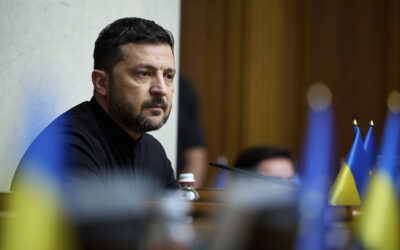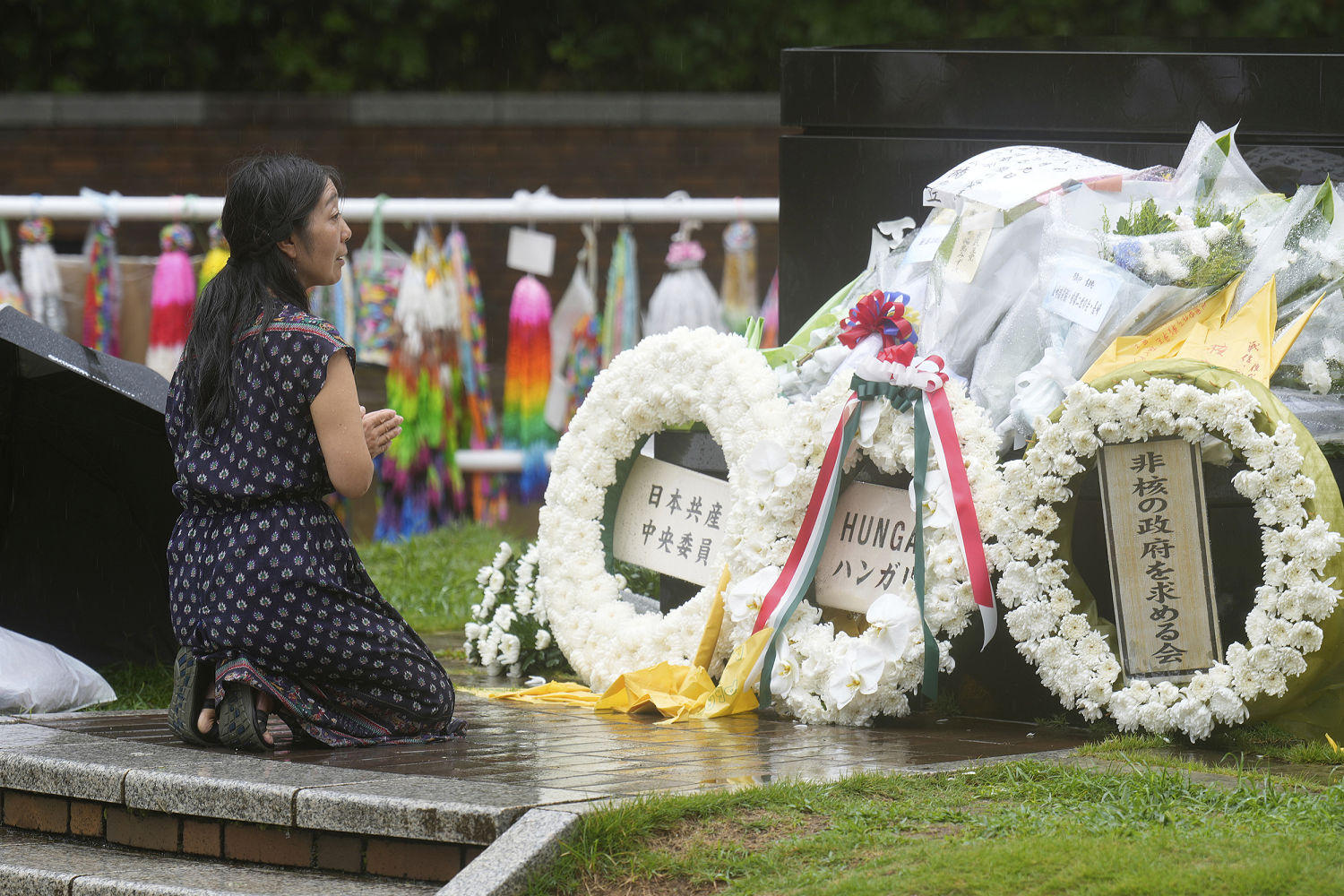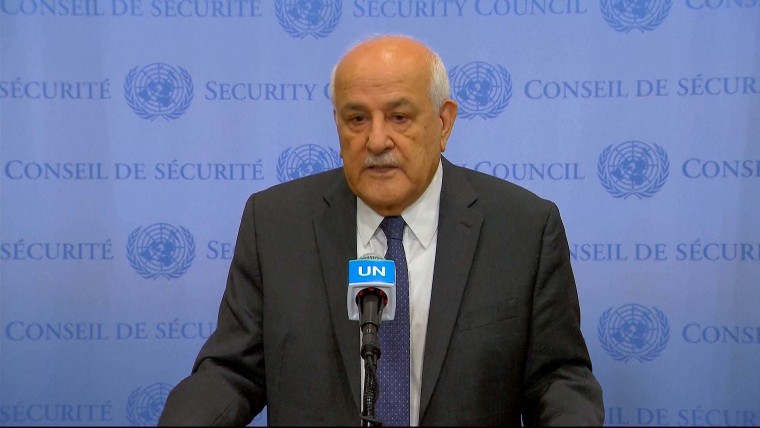Aid drops over Gaza criticized for being dangerous as starvation mounts under Israel offensive
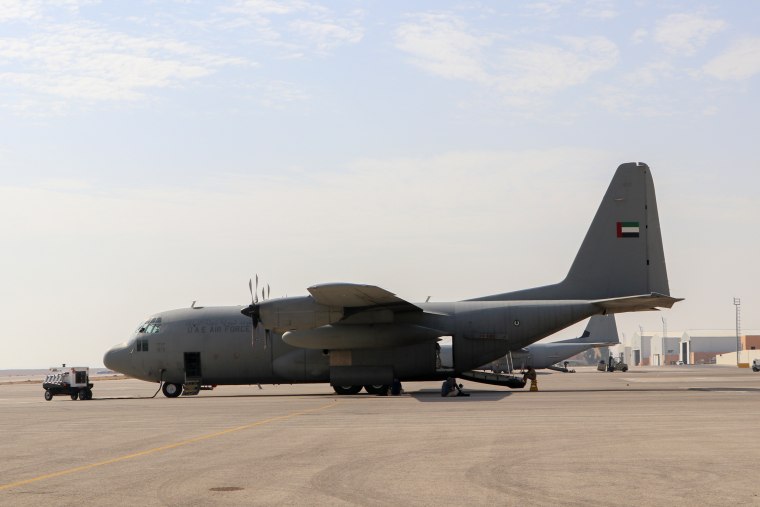
ABOVE NORTHERN GAZA — From the sky, a besieged Gaza briefly came into view early Saturday as the military plane opened its back door and a mass of tents could be seen near the Mediterranean coast from a side window.
Then, boxes of baby formula, food and other supplies were pushed out the back and parachuted to the ground — a tiny fraction of what is required for the enclave’s population, which is facing a spiraling hunger crisis — delivered by a method that experts say is inefficient, dangerous and in some cases deadly.
But with mounting international outrage about deaths from starvation in Gaza under Israel’s offensive and crippling aid restrictions, several countries have started dropping food, medicine and other supplies into Gaza from the sky.

“Those aid drops are actually causing havoc,” Dr. Umar Burney, a Texas-based orthopedic surgeon volunteering in Gaza, told NBC News in a telephone interview Saturday from the Al-Ahli Baptist Hospital in northern Gaza. Multiple explosions could be heard ringing out nearby as he spoke.
Burney, who has been treating patients in Gaza for the past week as part of a team with MedGlobal, a Chicago-based nonprofit that arranges volunteer medical missions to the enclave, added that he had taken care of “multiple patients who’ve been crushed by these sort of unplanned, unannounced aid drops on top of their heads, literally on top of their heads.”
Saturday’s flight from an air base just outside the Jordanian capital Amman took place a day after Israeli Prime Minister Benjamin Netanyahu and his government faced a wave of condemnation from European leaders, Arab nations and a group representing the families of hostages after it announced plans to take control of Gaza City in the north of the enclave.
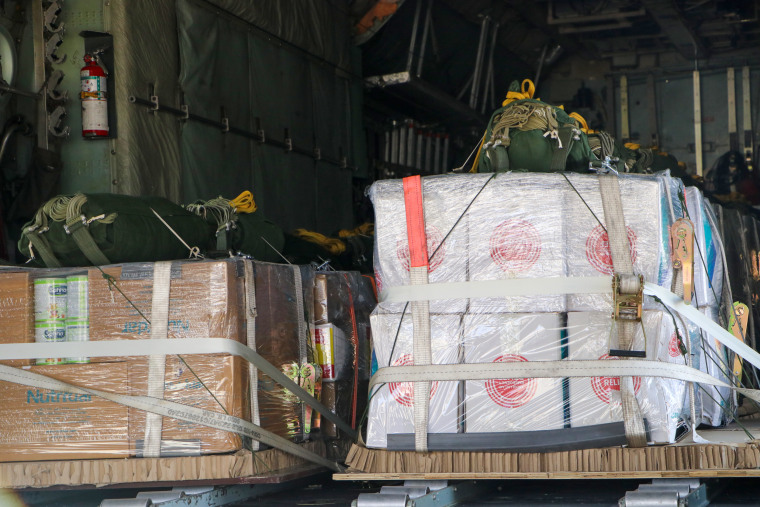
United Nations Secretary-General António Guterres condemned the plan on Friday as a “dangerous escalation” that risks “deepening the already catastrophic consequences for millions of Palestinians.”
His colleague Volker Türk, the U.N. high commissioner for human rights, also said in a statement that “the Israeli Government should put all its efforts into saving the lives of Gaza’s civilians by allowing the full, unfettered flow of humanitarian aid.”
Deaths from starvation in Gaza have been on the rise after Israel launched a crippling blockade barring the entry of food and other vital supplies into the enclave in early March before ending its ceasefire with Hamas.
It lifted the blockade in May, allowing a basic amount of aid into Gaza, largely distributed under a controversial new distribution system led by the U.S.- and Israel-backed Gaza Humanitarian Foundation.
Since then, nearly 1,400 people have been killed and more than 4,000 injured while seeking food, the United Nations’ Office for the Coordination of Humanitarian Affairs said in an update Tuesday. “At least 859 people have been killed around GHF sites since the beginning of GHF’s operations,” it added.
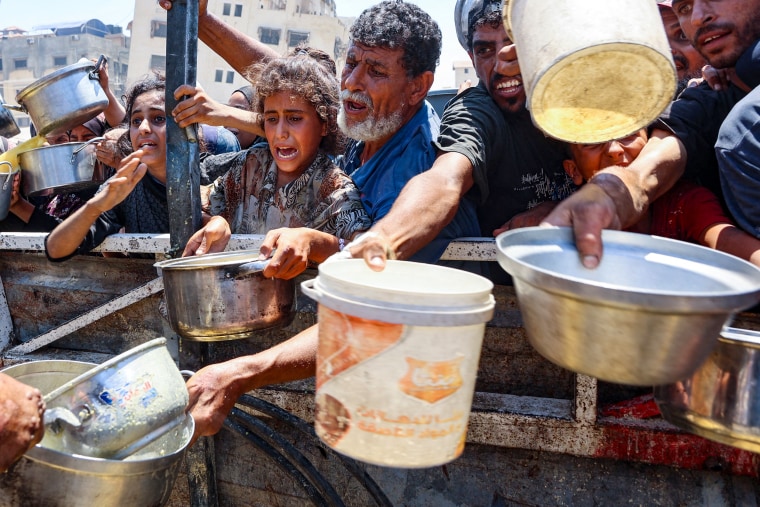
Asked to address the rising death toll by NBC News on Wednesday, GHF said aid convoys belonging to the United Nations and other organizations in the past often passed near these locations and were regularly looted by large crowds.
The Israeli military said in a statement Saturday that it allows GHF to “distribute aid to Gaza residents independently.” It said that after “incidents in which harm to civilians who arrived at distribution facilities was reported, thorough examinations were conducted” and that “systematic learning processes” to improve the operational response are underway.
Faced with mounting global outrage, Israel began tactical pauses in some parts of Gaza to allow more aid into the enclave late last month. It also began to allow countries to airdrop supplies into the territory, although aid groups have criticized this method of delivery.
“These air drops are falling in extremely populated areas. They’re dangerous,” Caroline Willemen, a project coordinator at a Médecins Sans Frontières (Doctors Without Borders) clinic in Gaza City, told British broadcaster Sky News on Saturday. “They have fallen on tents, people have been injured,” she added.
Aid groups have also pointed out that the drops can only provide a fraction of what is required for Gaza’s population of around 2 million people as the hunger crisis continues to spiral and much of the enclave plunge into famine conditions.

Tedros Adhanom Ghebreyesus, the director-general of the World Health Organization, told journalists Thursday that at least 99 people, including 29 children under age 5, have died from malnutrition this year. These numbers were likely underestimates, he said, and the Palestinian Health Ministry in Gaza cites higher figures.
On Friday, the ministry said hospitals had recorded four deaths “due to starvation and malnutrition” within a 24-hour time frame, including two children. This brought the total number of starvation deaths to 201, including 98 children.
Israel has maintained there is no starvation in Gaza and that the situation on the ground is being exaggerated, almost 22 months after it launched its offensive following the Hamas-led Oct. 7, 2023, attacks in which some 1,200 people were killed and around 250 taken hostage, marking a major escalation in a decadeslong conflict.
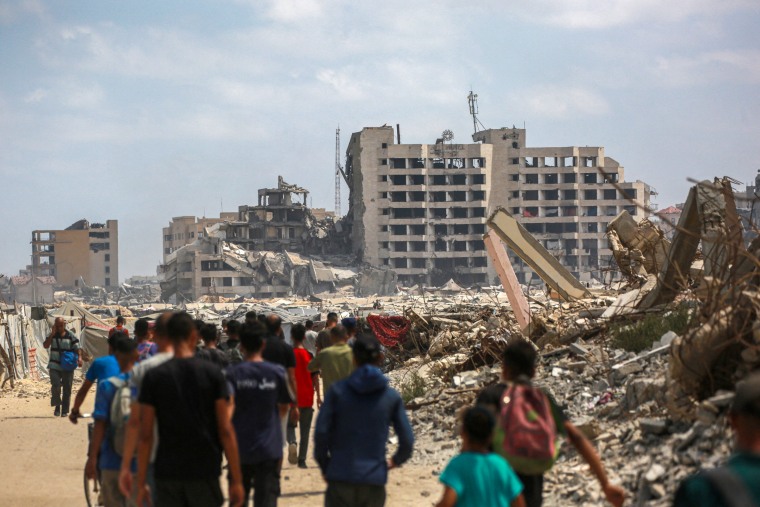
Since then, more than 61,000 people have been killed in Gaza, including thousands of children, according to the Palestinian Health Ministry in the enclave, while much of the territory has been destroyed.
Foreign journalists have been banned from entering Gaza independently since Israel launched its offensive. Traveling on aid flights has become one of the few ways of witnessing the destruction in the territory firsthand.
